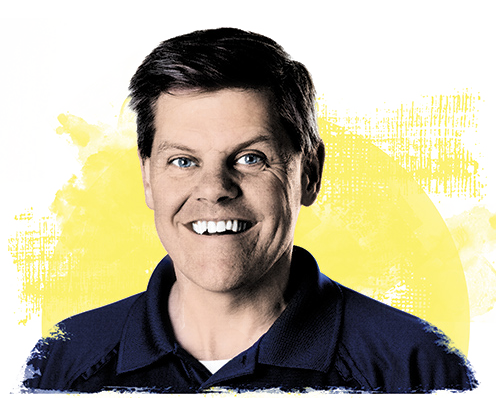AMERICAN MOTORCYCLIST December 2019
Common interests
AMA. MIC Share History, Goals

By Rob Dingman
At the end of September, Columbus, Ohio, once again played host to the American International Motorcycle Expo. AIMExpo is the recognized annual motorcycle-industry trade show for OEMs, dealers, consumers and media.
AIMExpo is owned and operated by the Motorcycle Industry Council, a trade association representing manufacturers, distributors and retailers of motorcycles and other powersports products, parts, accessories and related goods and services and members of allied trades. The MIC exists to preserve, protect, promote and grow the motorcycle industry.
In fact, the origins of the AMA can be traced to MIC’s predecessor organization, the Motorcycle and Allied Trades Association. Early in its existence, a committee of the M&ATA began registering clubs and supporting motorcycling activity. Soon after, the organization created a Competition Committee to handle things such as competition rules and rider classifications, in the wake of the demise of the Federation of American Motorcyclists, which previously served this purpose.
This effort engaged motorcycling consumers and gave them something to do with their motorcycles. Organized club recreational events and organized competitive events helped foster interest in motorcycling and expand the industry.
In 1919, Competition Committee members identified the need for a separate association of riders and rider registration, regulation, and the encouragement of events began that year. After five years of growth in rider registration, the M&ATA created the American Motorcycle Association in 1924. The M&ATA would later unite with scooter trade representatives and become the MS&ATA. And that organization would merge with the West Coast Motorcycle Safety Council to become the Motorcycle Industry Council.
It is no secret that the motorcycle industry continues to struggle to find ways to grow, as it never recovered from the Great Recession of 2008. As I pointed out in this column in March, the world of motorcycling is changing, along with consumer preferences. It is imperative that the motorcycle industry adapt to this ever-changing environment and find ways to grow and attract new riders.
Motorcycle manufacturers can’t singularly focus their energy and resources on conquest sales, whereby they hope to convert to their brand those loyal to another brand. They are all battling over an ever-shrinking pie of motorcycling consumers, and such an approach is not going to sustain the motorcycle industry very far into the future. The pie must grow by attracting new riders to motorcycling.
To that end, at AIMExpo’s opening session, the MIC presented a strategic framework for a long-term, industry-wide effort designed to boost ridership and get more riders riding more. The MIC leadership presenting the information included MIC Board Chair and AMA Board Member Paul Vitrano, senior assistant general counsel of Indian Motorcycle and Polaris Inc.; MIC Vice Chair Chuck Boderman, vice president of the Powersports Division at American Honda Motor Co.; and incoming MIC President and CEO Erik Pritchard.
Vitrano discussed research conducted by a consulting firm hired by the MIC into the key drivers that underlie the industry. Through this research, the MIC worked to understand the culture code of motorcycling and identified four key steps in the journey to becoming a motorcycle rider. Those steps include: Inspire—get more people to take notice of motorcycling; Explore—help more people learn about motorcycling in a way that aligns with their lifestyle and personal interests; Engage—knock down barriers and welcome new folks; and Integrate—make motorcycling accessible, affordable and enriching.
In an MIC press release about the presentation, Pritchard said they are working to refine these elements into an action plan and that the motorcycle industry must unify as one body pulling in the same direction to create new riders.
Something stuck with me that Boderman said during the presentation in discussing the need for the entire industry to embrace this project. He said that the motorcycle industry is not just the MIC, but everyone there in the room, many of whom were not MIC members or even eligible to be MIC members. This acknowledgement was refreshing to hear, as the MIC has been insular at times and not always eager to work with the AMA.
I am frequently asked by respected people in the motorcycle industry why the MIC and the AMA don’t work more closely together. My consistent answer over the years has been that the MIC has viewed the AMA as a subservient entity rather than an equal partner, and, in my view, that is not in the best interest of the AMA membership.
Having gotten my start in the motorcycle industry working for the MIC in its government relations office in the Washington, D.C., area, this has been a source of frustration for me. After spending some time with Erik Pritchard at the AMA offices before AIMExpo, I am optimistic about the prospect of improved relations with the MIC.
Both organizations must be strong and work together to grow the pie. The future of motorcycling depends on it.
Rob Dingman, a Charter Life Member, is president and CEO of the AMA.
